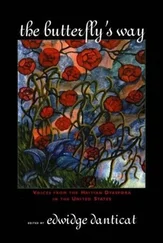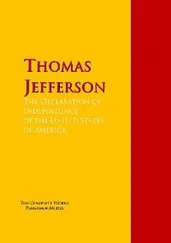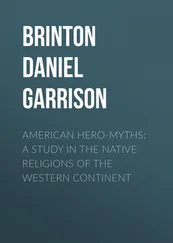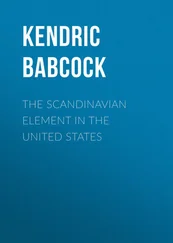Hubert Bancroft - The Native Races [of the Pacific states], Volume 5, Primitive History
Здесь есть возможность читать онлайн «Hubert Bancroft - The Native Races [of the Pacific states], Volume 5, Primitive History» — ознакомительный отрывок электронной книги совершенно бесплатно, а после прочтения отрывка купить полную версию. В некоторых случаях можно слушать аудио, скачать через торрент в формате fb2 и присутствует краткое содержание. Жанр: foreign_antique, foreign_prose, на английском языке. Описание произведения, (предисловие) а так же отзывы посетителей доступны на портале библиотеки ЛибКат.
- Название:The Native Races [of the Pacific states], Volume 5, Primitive History
- Автор:
- Жанр:
- Год:неизвестен
- ISBN:нет данных
- Рейтинг книги:5 / 5. Голосов: 1
-
Избранное:Добавить в избранное
- Отзывы:
-
Ваша оценка:
- 100
- 1
- 2
- 3
- 4
- 5
The Native Races [of the Pacific states], Volume 5, Primitive History: краткое содержание, описание и аннотация
Предлагаем к чтению аннотацию, описание, краткое содержание или предисловие (зависит от того, что написал сам автор книги «The Native Races [of the Pacific states], Volume 5, Primitive History»). Если вы не нашли необходимую информацию о книге — напишите в комментариях, мы постараемся отыскать её.
The Native Races [of the Pacific states], Volume 5, Primitive History — читать онлайн ознакомительный отрывок
Ниже представлен текст книги, разбитый по страницам. Система сохранения места последней прочитанной страницы, позволяет с удобством читать онлайн бесплатно книгу «The Native Races [of the Pacific states], Volume 5, Primitive History», без необходимости каждый раз заново искать на чём Вы остановились. Поставьте закладку, и сможете в любой момент перейти на страницу, на которой закончили чтение.
Интервал:
Закладка:
Id. , pp. 157, 236, 389, vol. vi., pp. 273-5.
179
Id. , vol. viii., p. 160.
180
Id. , p. 174.
181
Id. , p. 176.
182
Id. , pp. 174-82. He presents a most elaborate discussion of this point. See also vol. vi., pp. 512, 523.
183
Id. , vol. viii., p. 238.
184
Id. , p. 248.
185
Id. , p. 257.
186
Id. , p. 258, vol. vi., p. 236.
187
Id. , pp. 164-6.
188
Id. , p. 208. 'Representations of the lifting up of serpents frequently occur in Mexican paintings: and the plagues which Moses called down upon the Egyptians by lifting up his rod, which became a serpent, are evidently referred to in the eleventh and twelfth pages of the Borgian Manuscript . An allusion to the passage of the Red Sea … seems also to be contained in the seventy-first page of the Lesser Vatican MS. ; and the destruction of Pharaoh and his host, and the thanksgiving of Moses, may perhaps be signified by the figure on the left, in the same page, of a man falling into a pit or gulf, and by the hand on the right stretched out to receive an offering.'
189
Id. , p. 222.
190
Id. , p. 232, et seq. Kingsborough reasons at some length on this point.
191
Id. , p. 361.
192
Id. , p. 406.
193
Id. , pp. 272-3, 333-5, 392-3; vol. viii., pp. 121-2, 142-3, 391.
194
Id. , vol. vi., pp. 300-1; vol. viii., p. 137.
195
Id. , vol. vi., p. 504, vol. viii., p. 18.
196
Id. , vol. vi., p. 125.
197
Id. , p. 45.
198
Id. , p. 142.
199
Id. , p. 246. Duran sustains the theory that the Indians are the descendants of the lost ten tribes of Israel. After giving several reasons founded on the Scriptures, he refers to the traditions obtained by him from the old people of the country. They related that their ancestors, whilst suffering many hardships and persecutions, were prevailed upon by a great man, who became their chief, to flee from that land into another, where they might have rest; they arrived at the sea-shore, and the chief struck the waters with a rod he had in his hands; the sea opened, and the chief and his followers marched on, but were soon pursued by their enemies; they crossed over in safety, and their enemies were swallowed up by the sea; at any rate, their ancestors never had any further account of their persecutors. Another tradition transmitted from generation to generation, and recorded in pictures, is, that while their first ancestors were on their journey to the promised land, they tarried in the vicinity of certain high hills; here a terrible earthquake occurred, and some wicked people who were with them were swallowed up by the earth opening under their feet. The same picture that Father Duran saw, showed that the ancestors of the Mexican people transmitted a tradition, relating that during their journey a kind of sand (or hail) rained upon them. Father Duran further gives an account furnished him by an old Indian of Cholula (some 100 years old) concerning the creation of the world: The first men were giants who, desirous of seeing the home of the sun, divided themselves into two parties, one of which journeyed to the west, and the other to the east, until they were stopped by the sea; they then concluded to return to the place they started from, called Vztacculemjueminian ; finding no way to reach the sun, whose light and beauty they highly admired, they determined to build a tower that should reach the heavens. They built a tower; but the Lord became angry at their presumption, and the dwellers of heaven descended like thunderbolts and destroyed the edifice; the giants on seeing their work destroyed, were much frightened, and scattered themselves throughout the earth. Duran , Hist. Indias , MS., tom. i., cap. i.
200
Kingsborough's Mex. Antiq. , vol. vi., p. 246.
201
Id. , p. 248.
202
Id. , p. 253.
203
Id. , p. 254.
204
Id. , p. 312.
205
Id. , p. 361.
206
Id. , p. 382.
207
Id. , p. 401.
208
To enter into details on all these subjects would require volumes as large, and I may add, as unreadable, as those of Lord Kingsborough. The reader who wishes to investigate more closely, will find all the points to which I have referred in volumes vi. and viii. of the noble writer's work, Mexican Antiquities . Mr James Adair, 'a trader with the Indians, and resident in their country for forty years,' very warmly advocates the Hebrew theory. As his intercourse with the Americans was confined to the wild tribes, the genuine 'red men' inhabiting the south-eastern states of North America, his argument and analogies differ in many points from those of Kingsborough and García, who treated chiefly of the civilized nations of Mexico and Central America. Here are some of his comparisons: 'The Israelites were divided into Tribes and had chiefs over them, so the Indians divide themselves: each tribe forming a little community within the nation – And as the nation hath its particular symbol, so hath each tribe the badge from which it is denominated.' If we go from nation to nation among them we shall not find one individual who doth not distinguish himself by his family name. Every town has a state house or synedrion, the same as the Jewish sanhedrim, where almost every night the headmen meet to discuss public business. The Hebrew nation were ordered to worship Jehovah the true and living God, who by the Indians is styled Yohewah . The ancient heathens, it is well known, worshiped a plurality of Gods: but these American Indians pay their religious devoir to Loak Ishtohoollo Aba, The Great Beneficent Supreme Holy Spirit of Fire. They do not pay the least perceptible adoration to images. Their ceremonies in their religious worship accord more nearly with the Mosaic institutions, which could not be if they were of heathen descent. The American Indians affirm, that there is a certain fixed time and place, when and where every one must die, without the possibility of averting it; such was the belief also of the ancient Greeks and Romans, who were much addicted to copying the rites and customs of the Jews. Their opinion that God chose them out of all the rest of mankind as his peculiar and beloved people, fills both the white Jew and the red American, with that steady hatred against all the world, which renders them hated and despised by all. We have abundant evidence of the Jews believing in the ministration of angels, during the Old Testament dispensation, their frequent appearances and their services on earth, are recorded in the oracles, which the Jews themselves receive as given by divine inspiration, and St Paul in his epistle addressed to the Hebrews speaks of it as their general opinion that "angels are ministering spirits to the good and righteous on earth." The Indian sentiments and traditions are the same. They believe the higher regions to be inhabited by good spirits, relations to the Great Holy One, and that these spirits attend and favor the virtuous. The Indian language and dialects appear to have the very idiom and genius of the Hebrew. Their words and sentences are expressive, concise, emphatical, sonorous, and bold, and often both in letters and signification synonymous with the Hebrew language. They count time after the manner of the Hebrews, reckoning years by lunar months like the Israelites who counted by moons. The religious ceremonies of the Indian Americans are in conformity with those of the Jews, they having their Prophets, High Priests, and others of religious order. As the Jews had a sanctum sanctorum or most holy place, so have all the Indian nations. The dress also of their High Priests is similar in character to that of the Hebrews. The festivals, feasts, and religious rites of the Indian Americans have also a great resemblance to that of the Hebrews. The Indian imitates the Israelite in his religious offerings. The Hebrews had various ablutions and anointings according to the Mosaic ritual – and all the Indian nations constantly observe similar customs from religious motives. Their frequent bathing, or dipping themselves and their children in rivers, even in the severest weather, seems to be as truly Jewish as the other rites and ceremonies which have been mentioned. The Indian laws of uncleanness and purification, and also the abstaining from things deemed unclean are the same as those of the Hebrews. The Indian marriages, divorces and punishments of adultery, still retain a strong likeness to the Jewish laws and customs on these points. Many of the Indian punishments resemble those of the Jews. Whoever attentively views the features of the Indian, and his eye, and reflects on his fickle, obstinate, and cruel disposition will naturally think of the Jews. The ceremonies performed by the Indians before going to war, such as purification and fasting, are similar to those of the Hebrew nation. The Israelites were fond of wearing beads and other ornaments, even as early as the patriarchal age, and in resemblance to these customs the Indian females continually wear the same, believing it to be a preventive against many evils. The Indian manner of curing the sick is very similar to that of the Jews. Like the Hebrews, they firmly believe that diseases and wounds are occasioned by divine anger, in proportion to some violation of the old beloved speech. The Hebrews carefully buried their dead, so on any accident they gathered their bones, and laid them in the tombs of their forefathers: thus, all the numerous nations of Indians perform the like friendly office to every deceased person of their respective tribe. The Jewish records tell us that the women mourned for the loss of their deceased husbands, and were reckoned vile by the civil law if they married in the space of at least ten months after their death. In the same manner all the Indian widows, by an established strict penal law, mourn for the loss of their deceased husbands; and among some tribes for the space of three or four years. The surviving brother by the Mosaic law, was to raise seed to a deceased brother, who left a widow childless to perpetuate his name and family. The American law enforces the same rule. When the Israelites gave names to their children or others they chose such appellatives as suited best their circumstances and the times. This custom is a standing rule with the Indians. Amer. Ind.
Читать дальшеИнтервал:
Закладка:
Похожие книги на «The Native Races [of the Pacific states], Volume 5, Primitive History»
Представляем Вашему вниманию похожие книги на «The Native Races [of the Pacific states], Volume 5, Primitive History» списком для выбора. Мы отобрали схожую по названию и смыслу литературу в надежде предоставить читателям больше вариантов отыскать новые, интересные, ещё непрочитанные произведения.
Обсуждение, отзывы о книге «The Native Races [of the Pacific states], Volume 5, Primitive History» и просто собственные мнения читателей. Оставьте ваши комментарии, напишите, что Вы думаете о произведении, его смысле или главных героях. Укажите что конкретно понравилось, а что нет, и почему Вы так считаете.
![Hubert Bancroft The Native Races [of the Pacific states], Volume 5, Primitive History обложка книги](/books/749157/hubert-bancroft-the-native-races-of-the-pacific-s-cover.webp)









![Hubert Bancroft - The Native Races [of the Pacific states], Volume 1, Wild Tribes](/books/750126/hubert-bancroft-the-native-races-of-the-pacific-s-thumb.webp)

